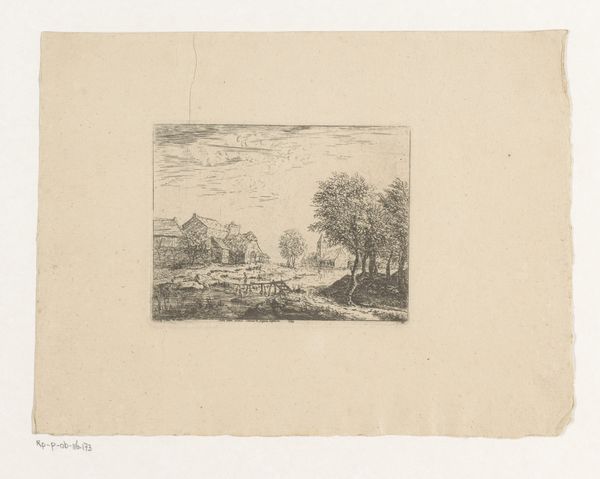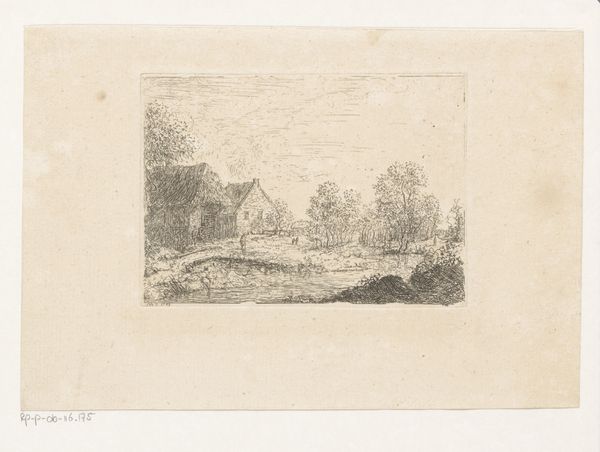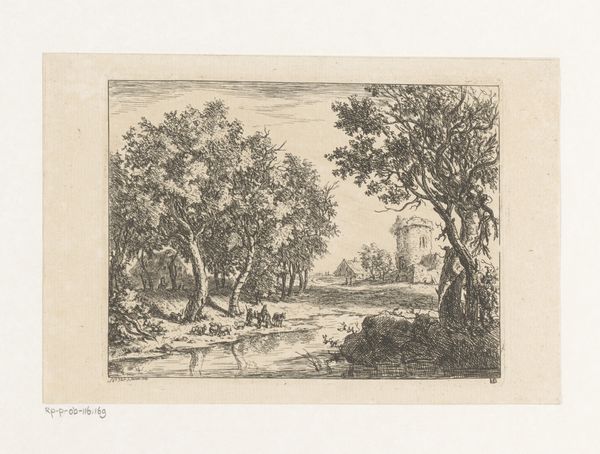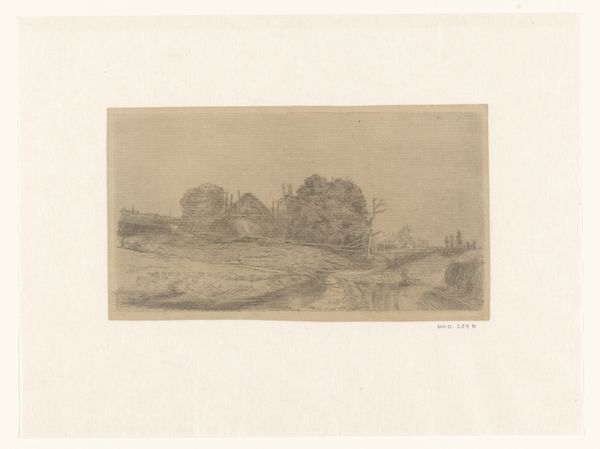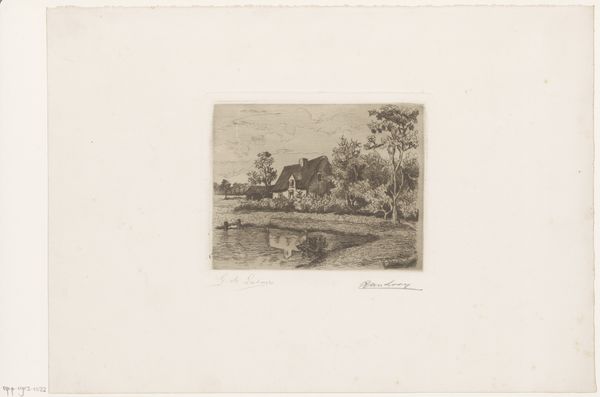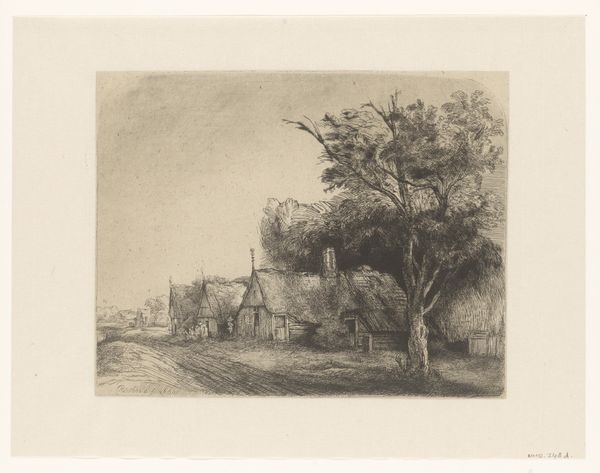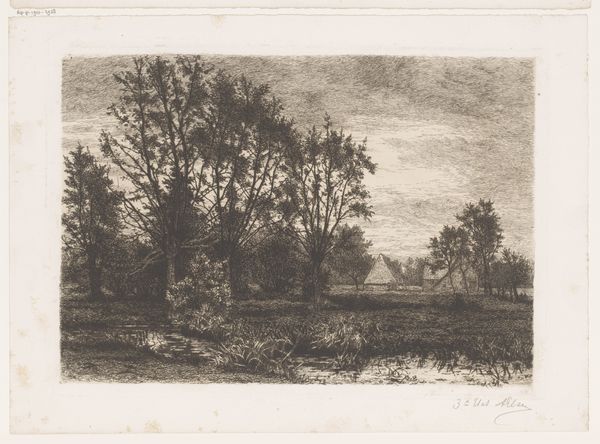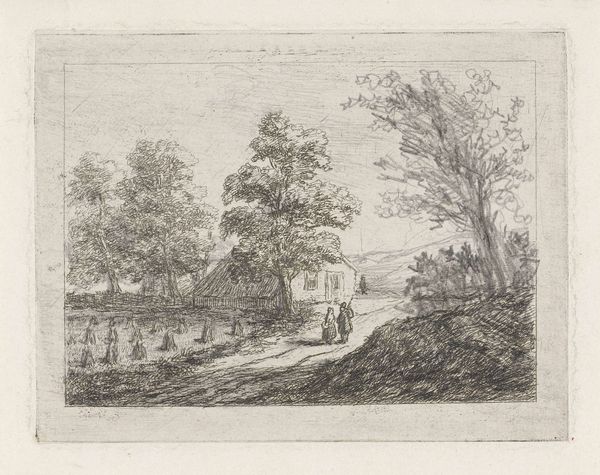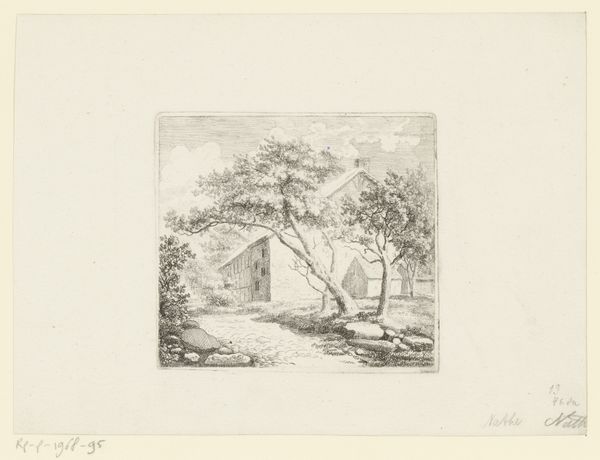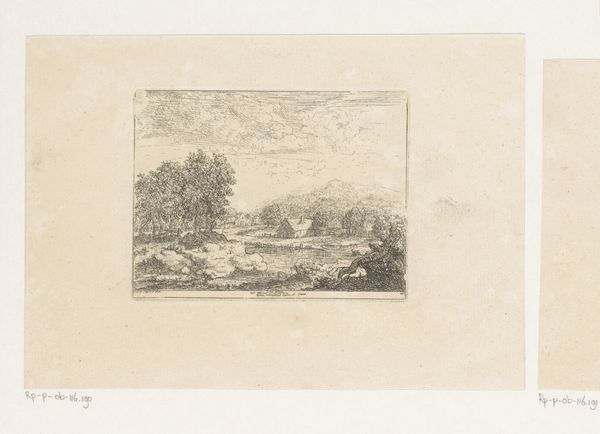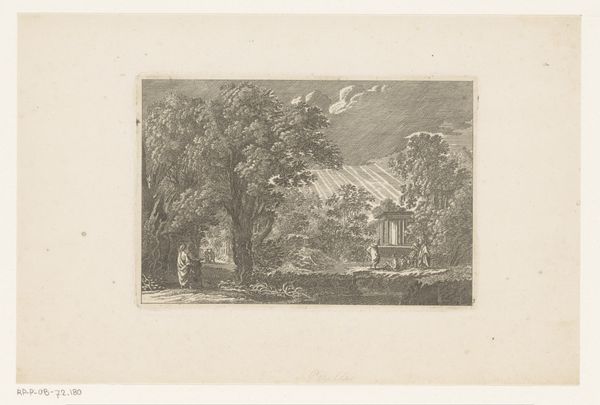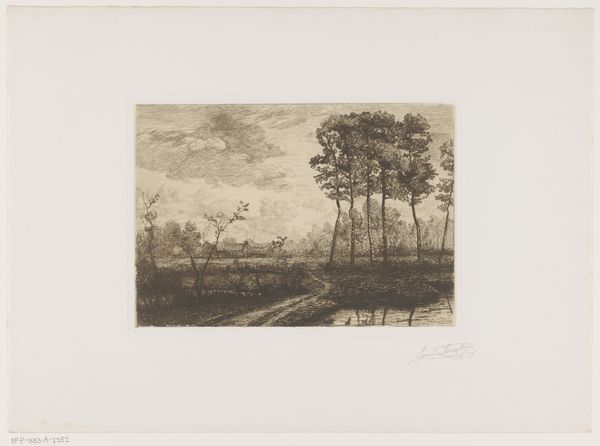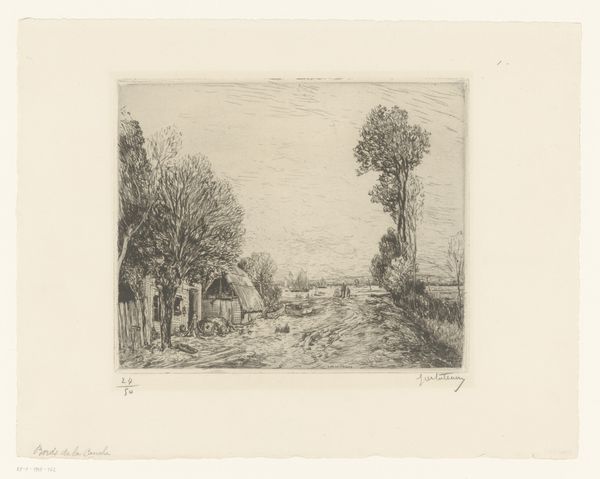
print, etching
# print
#
etching
#
landscape
#
etching
#
realism
Dimensions: height 195 mm, width mm
Copyright: Rijks Museum: Open Domain
Editor: This is Gerrit Lamberts' "Landscape with Houses by the Water," an etching from around 1820, housed here at the Rijksmuseum. I find the scene quite serene, almost melancholic, with those soft, hazy lines. How do you interpret this work? Curator: Notice how the artist uses the water's reflection. Water often symbolizes the subconscious, the hidden depths of our psyche. Are the houses near the water reflecting stability or vulnerability, especially considering their humble size? Editor: That's interesting, I hadn’t considered that. I guess I was drawn more to the overall quietness of it. Curator: Consider also the use of light and shadow. Where is your eye drawn first? That is no accident; how it creates emotional symbolism depends on our individual background. Editor: I think the way the trees are framing the buildings draws my eye towards the buildings. Curator: Precisely. The framing, the placement… it suggests an intimate space, protected perhaps, but also possibly isolated. Etchings, prints; these were often for wider distribution. What collective memory of the Netherlands would the artist be trying to capture, and what collective future might it inform? Editor: I'm starting to see the landscape less as just a pretty scene, and more as a symbolic space loaded with meaning about this specific region and people. Curator: Exactly. By observing the landscape closely, it serves as a vessel containing memories. Through the distribution of his landscape, Lamberts is solidifying that connection for all Dutch people. Editor: Fascinating to think of this quiet etching carrying so much symbolic and historical weight! Thank you for highlighting what I overlooked.
Comments
No comments
Be the first to comment and join the conversation on the ultimate creative platform.

